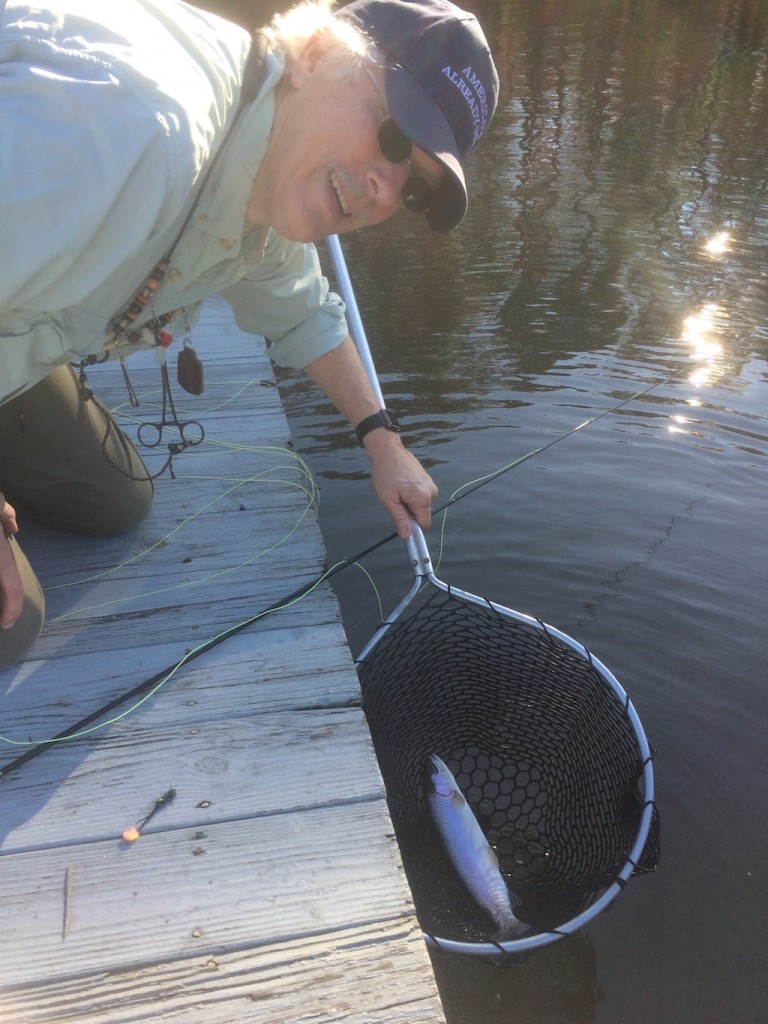I wanted to be able to reliably reach the local VHF/UHF repeaters, so I bought a 2 meter 1/2 wave antenna to mount outside the house and hook up to my handheld radio. It came over the weekend, and I installed it this afternoon. The antenna itself is a set of wires of specific lengths and impedances that you mount in 5 feet of PVC pipe. I hooked it up with a large diameter low loss cable, and used an adapter to connect to the SMA plug on my handheld. Works like a champ! I’m now able to reliably key repeaters 15 miles away with the 5 watt handheld. I talked to a fellow Ham this evening via the repeater (W4AGC 2M on TV Hill in Durham), and he said I had excellent sound quality with no distortion. Also, was able to successfully test out an IRLP connection via the W4AGC 70cm repeater to my “beach” repeater in Newport, though my new Ham friend from Harker’s Island, KM4NRZ, didn’t answer. Also did a test of an IRLP reflector node, and heard my voice come back. Cool!
Monthly Archives: January 2016
Clearwater 2016, v1
As my (one or two?) regular readers know, I like to visit a local “lake” that the TU chapter stocks with trout for a winter fishery. Let’s see, trout, hanging out with a few fellow anglers I don’t see often enough, only 15 minutes from my house, what’s not to like?
On January 9th, I had one of my two seasonal visits to Clearwater. The fishing was slow, as recent rains had muddied the lake, but all the 8 anglers there each caught a handful of nice fish. I caught mine on egg patterns, a fly that I’ve historically used in the winter with great success, but not at Clearwater. Great fellowship, and always fun to hang with my fishing buddy, Sam. Already looking forward to the next trip there!
TU said that they put a lot of browns in the lake this year, but I didn’t see any. Maybe next time.
APRS antenna update
As I wrote here previously, I’ve been exploring the APRS (Automatic Packet Reporting System) Ham Radio system. I noted that while I had the Kenwood TH-D72 radio configured correctly, it was not reliably getting its packets to the nearest digipeater to be ingested into the APRS/APRS-IS world. I suspected it was an antenna issue, as I was using the “rubber duck” that came with the radio. I replaced that with a Diamond SRH77CA and that’s made a huge difference. I’ve used it to have a “chat” with another local APRS user several miles away, though via the digipeaters, it’s possible to have a digital chat with an APRS user much further away (depending on mutual routing settings). Additionally, I noted that when the radio was inside a vehicle, it was unlikely to successfully send a packet unless the digipeater was just a couple miles away. So, I also got a Diamond MR73S, a small magnetic-mount external antenna with an SMA connector. With that on top of my truck, the APRS “smart beaconing” works perfectly, sending status packets with information that reliably shows position and turns. Interesting stuff.
APRS radio
I’ve been experimenting with APRS (Automatic Packet Reporting System) on HAM Radio. Interesting stuff! Essentially, it is a system that provides situational awareness and context for radio-enabled devices by capturing “beacons” from devices such as mobile radios, fixed point radios, weather stations, satellites, antennas, and creating a data stream that’s used to create a geo-enabled map of devices in real time…an organic “Internet of Things” (IoT) joined in the radio spectrum. As Bob Bruninga, the father of APRS says:
“Since the primary objective is consistent exchange of information between everyone, APRS established standard formats not only for the transmission of POSITION, STATUS, MESSAGES, and QUERIES, it also establishes guidelines for display so that users of different systems will still see the same consistent information displayed in a consistent manner (independent of the particular display or maping system in use)”
There are gateways to the traditional Internet for email, but the value of APRS is in the dynamic resource map it populates to RF contacts in the local area (and through data added to the APRS-IS, the Internet system, and thus generally available), and its ability to send messages between participants. It’s a peer-to-peer network that can grow organically with the addition of “digipeaters” to relay traffic, but still provides station to station information. As the APRS Wikipedia article states, “Anyone may place any object or information on his or her map, and it is distributed to all maps of all users in the local RF network or monitoring the area via the Internet.”
It does depend on access to a digipeater, and one thing I’ve found in a couple days of testing is that my HT 5w Kenwood TH-D72 transmits to the nearest repeater from Emerald Isle with sketchy regularity. It’s 10 air miles, and the standard antenna on the TH-D72 is reliably receives APRS packets from KD4KTO-4, but seems to get them there irregularly. Next week, I’ll be back in the Chapel Hill area, and it will be interesting to see how things fare there. I’ve ordered a better antenna for the radio as well, and that should help considerably with transmit range.


